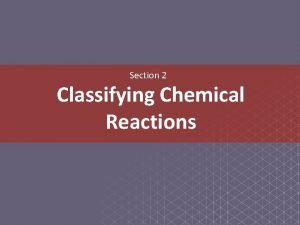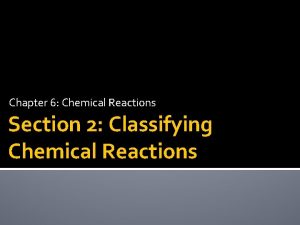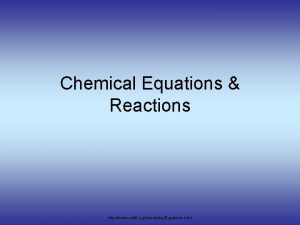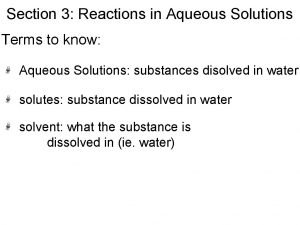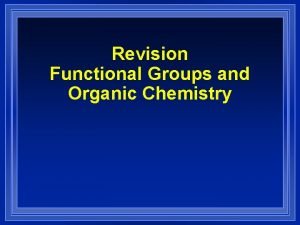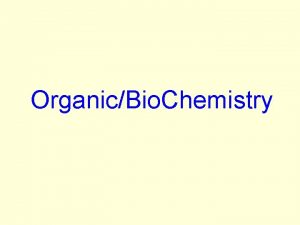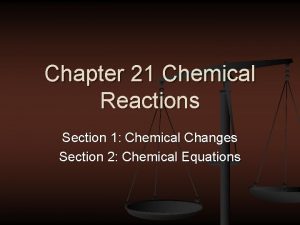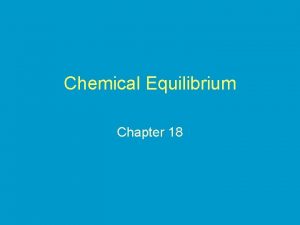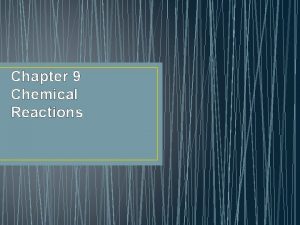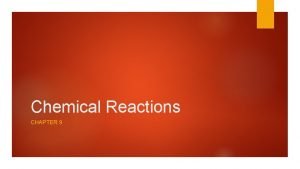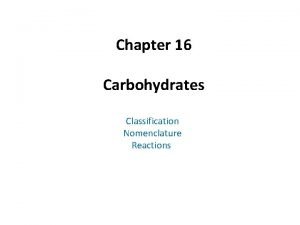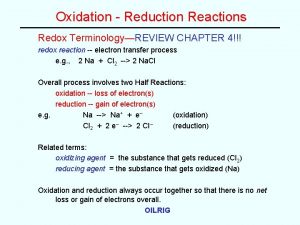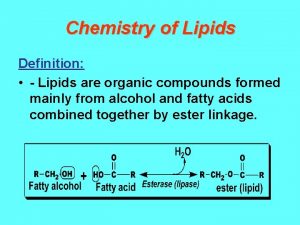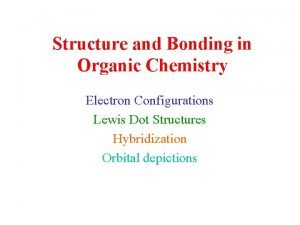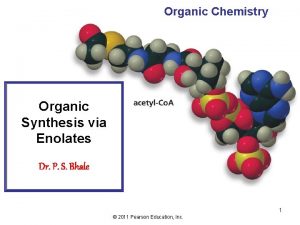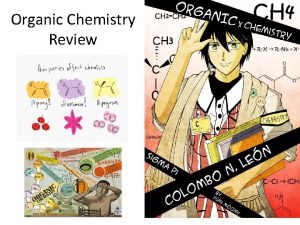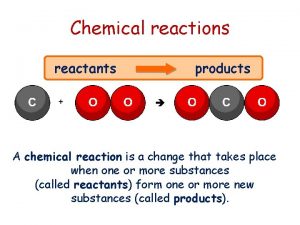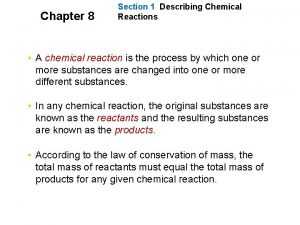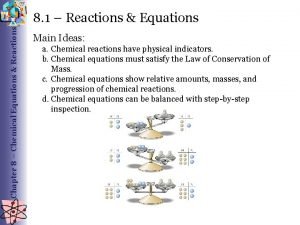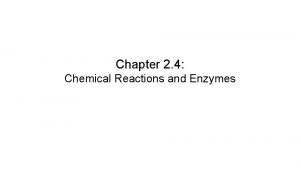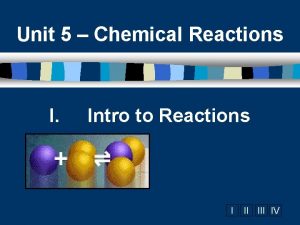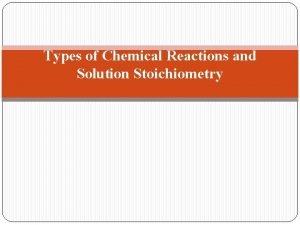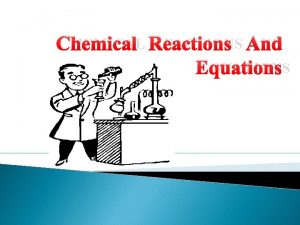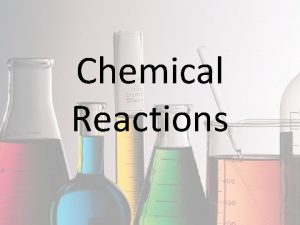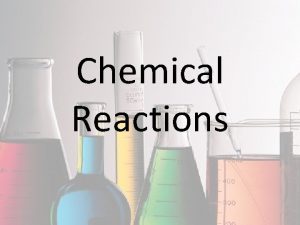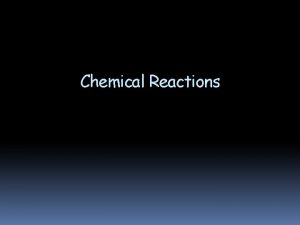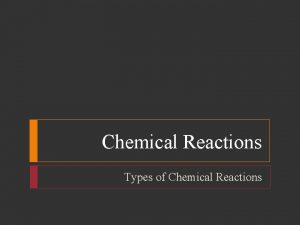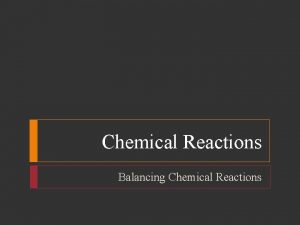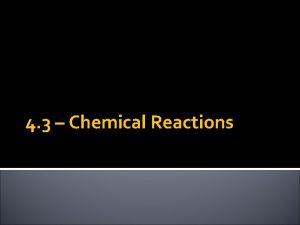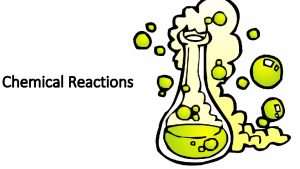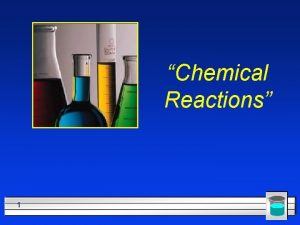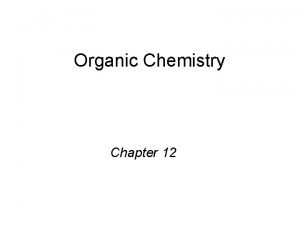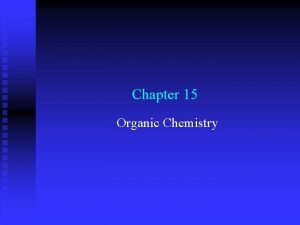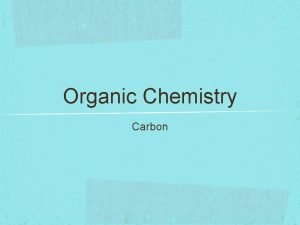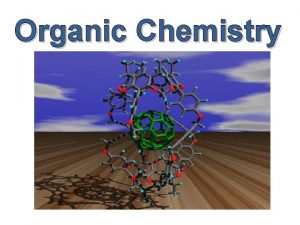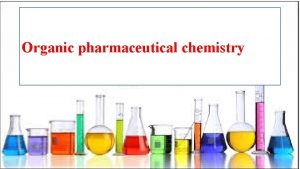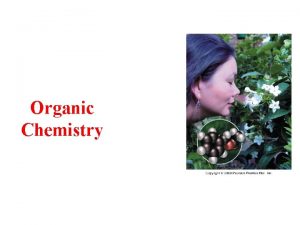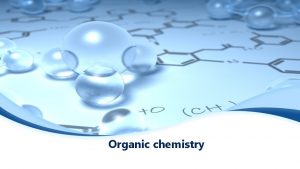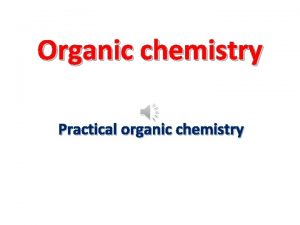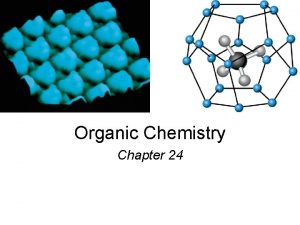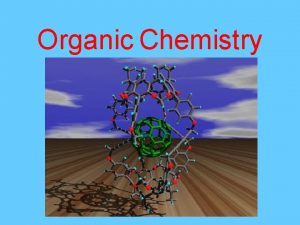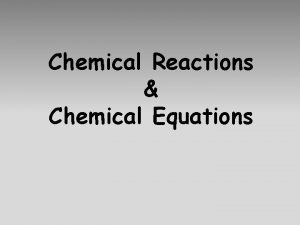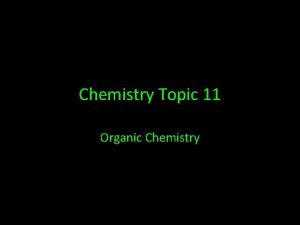Organic chemistry Study of chemical composition and reactions

























- Slides: 25

Organic chemistry • Study of chemical composition and reactions occurring in living matter • Inorganic Compounds • Do not contain carbon • Exceptions - CO 2, CO, bicarbonates • Water is the most abundant and important inorganic material, making up 60% - 80% of all cells and 2/3 of body weight

Organic Compounds • Contain the element carbon, hydrogen and oxygen. • Carbon is found in things that are or once were living. • Carbon atoms share electrons to form covalent bonds.

Organic Compounds • Organic compounds are composed of hundreds to thousands of individual molecules. – The single molecules in a polymer are called monomers.

Organic Compounds • The long molecules formed by repeating patterns of monomers are called polymers.

Macromolecules • 4 Types of Organic Compounds or macromolecules: carbohydrates, lipids, proteins, and nucleic acids. – Essential to maintaining life processes: cell function, storage, energy, homeostasis and genetic information.

Carbohydrates • Make up sugars and starches • Contain a hydroxyl (OH) group • Contain atoms of carbon, hydrogen, and oxygen. • The ratio of the atoms is 1 C : 2 H : 1 O • Provide energy to the cells. • Dissolve in water (hydrophilic)

Types of Carbohydrates • Carbohydrates are classified according to size. • One sugar is a monosaccharide (monomer). • Two sugars make a disaccharide. • Many sugar molecules linked together form a polysaccharide (polymer).

Monosaccharide Milk Sugar Fruit Sugar Types of Carbs

Disaccharide Maltose is two glucose molecules; forms in digestive tract of humans during starch digestion. Types of Carbs

Polysaccharide Starch is straight chain of glucose molecules with few side branches. Types of Carbs

Lipids • The three types of • Glycerol contains the lipids are fats, oils, hydroxyl (OH) group. and waxes. • Fatty acids contain • Contain carbon, the carboxyl (COOH) hydrogen, and oxygen group. • Typically contain two monomers – glycerol and fatty acids

Monomers in Lipids

Functions of Lipids • Lipids store energy for later use by the body. • Lipids also serve as padding and protection for the body. • Lipids do not dissolve in water (hydrophobic), but may contain parts that can dissolve in water. • The H : O ratio is higher in lipids than it is in carbohydrates.

Structure of a Lipid • Dissolves in water (hydrophilic) • Does not dissolve in water (hydrophobic)

Phospholipid • Found in cell membranes – Head is the phosphate group. • Hydrophilic – Tails are the fatty acids. • Hydrophobic

Fatty Acids • Long chains of carbon atoms with attached hydrogen atoms (hydrocarbons) • Saturated fats contain only single bonds between the carbon atoms. • Unsaturated fats contain one or more double or triple bonds between the carbon atoms.

Saturated & Unsaturated Fats

Steroids • Cholesterol is a molecule that people think it a fat, but in reality it is a steroid. • Steroids are flat hydrocarbon rings all joined together. • Cholesterol is essential for cell membranes, vitamin D and other bodily processes.

Hydrocarbons (cholesterol)

Proteins • Proteins are the building materials for the body. – Hair, skin, muscles, and organs are made mostly of proteins. • Composed of carbon, hydrogen, nitrogen, and oxygen • Contain amine (NH 2) and carboxyl (COOH) groups

Function of Proteins • The building blocks of proteins are amino acids (monomers). • Serve as enzymes which control rate of reactions and regulate cell processes. • Amino acids are connected by a special type of bond called a peptide bond. • Amino acid chains are called polypeptides. • A protein contains one or more polypeptide chains.

Amino Acids Function of Proteins

Types of Proteins • There are two types of proteins – fibrous and globular. • Fibrous protein (found in skin, tendons, bones, and muscles) does not dissolve in water (hydrophobic). • Globular protein (found in enzymes, some hormones, and hemoglobin) can dissolve in water (hydrophilic).

Fibrous Proteins • Keratins are a family of fibrous structural proteins; tough and insoluble, they form the hard but nonmineralized structures found in reptiles, birds, amphibians and mammals. Types of Proteins

Globular Proteins • Enzymes are proteins that catalyze (i. e. accelerate) chemical reactions. • Almost all processes in a biological cell need enzymes in order to occur at significant rates. Types of Proteins
 Section 2 classifying chemical reactions worksheet answers
Section 2 classifying chemical reactions worksheet answers Chemical reactions section 2 classifying chemical reactions
Chemical reactions section 2 classifying chemical reactions Unit 5 chemical reactions answers
Unit 5 chemical reactions answers Chemical reactions section 3 reactions in aqueous solutions
Chemical reactions section 3 reactions in aqueous solutions Chemical equations and reactions chapter 8 review
Chemical equations and reactions chapter 8 review Ib chemistry organic chemistry
Ib chemistry organic chemistry Inorganic chemistry vs organic chemistry
Inorganic chemistry vs organic chemistry Chemistry in biology section 2 chemical reactions
Chemistry in biology section 2 chemical reactions Chapter 6 chemistry in biology
Chapter 6 chemistry in biology Section 1 chemical changes
Section 1 chemical changes Are kc and kp equal
Are kc and kp equal Solubility rules
Solubility rules Chemical reactions chapter 9 study guide
Chemical reactions chapter 9 study guide Chapter 9 chemical reactions answers
Chapter 9 chemical reactions answers Maltose and cellobiose difference
Maltose and cellobiose difference Balancing redox reactions
Balancing redox reactions Saponifiable lipids example
Saponifiable lipids example Structure and bonding in organic chemistry
Structure and bonding in organic chemistry Acetoacetic ester synthesis mechanism
Acetoacetic ester synthesis mechanism Organic composition definition
Organic composition definition Reactants and products
Reactants and products Chapter 8 section 1 chemical equations and reactions
Chapter 8 section 1 chemical equations and reactions Chapter 8 review chemical equations and reactions
Chapter 8 review chemical equations and reactions Section 2-4 chemical reactions and enzymes
Section 2-4 chemical reactions and enzymes Examples of chemical change
Examples of chemical change Types of chemical reactions and solution stoichiometry
Types of chemical reactions and solution stoichiometry
